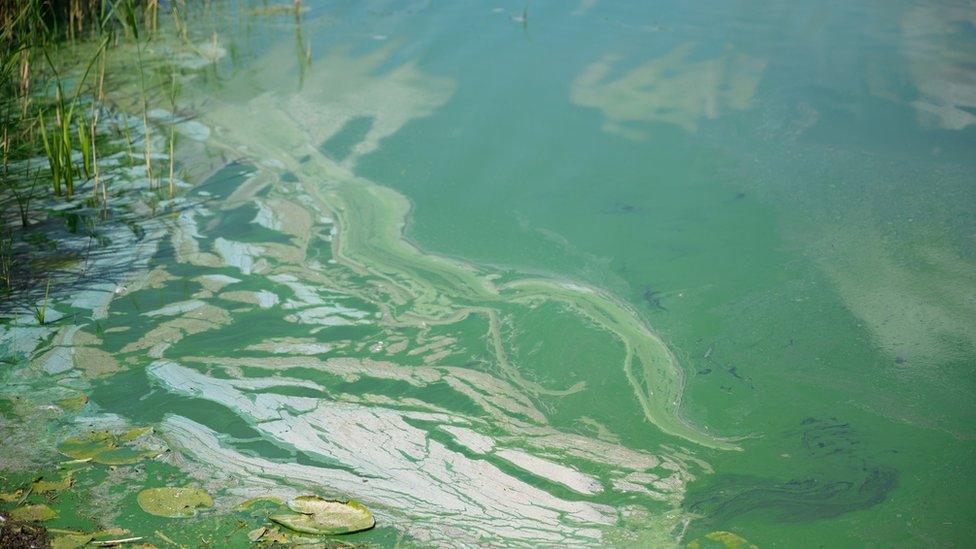Lough Neagh: Students propose egg-shell solution to algae problem
- Published
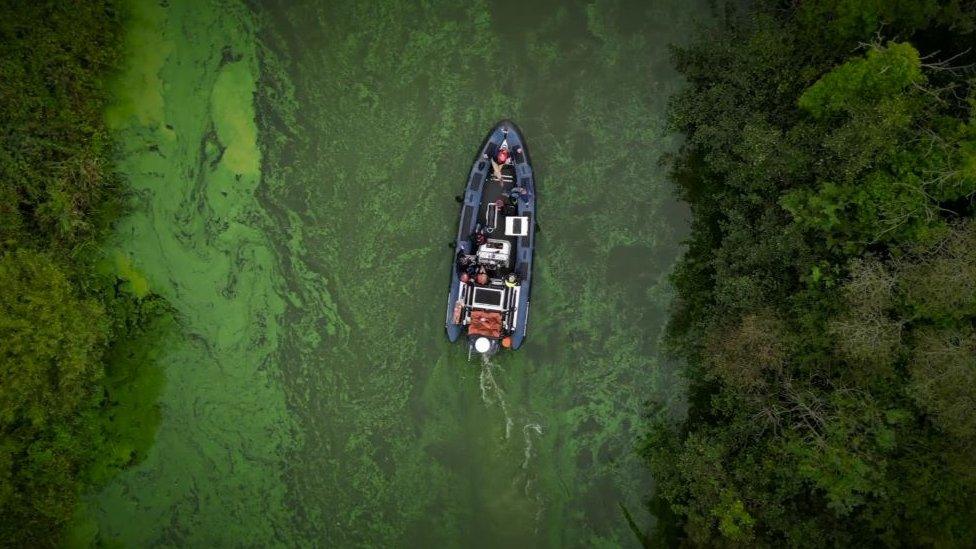
Blue-green algae has been found in waters in and around Northern Ireland over the summer
The blue-green slime that afflicted Lough Neagh for large parts of 2023 was major news last year - but now two bright young minds from County Down have come up with a "cracking" way to tackle the issue.
And it involves egg shells.
Ronan Scullion, 13, and Loachra Hill, 14, investigated when relatives living near the lough were affected.
The teenagers have been presenting their results at the BT Young Scientist Award in Dublin.
Speaking at the event, the students from St Colman's College in Newry said they were driven "to save our Lough Neagh".
What is blue-green algae?
Last summer, blooms of blue-green algae appeared in the UK's largest freshwater lake at levels not seen for half a century.
The algae is made up of bacteria, which can cause skin irritation and sickness for those who come into contact with it.
The biggest risk is to pets, livestock and wildlife.
EXPLAINER: What does the future hold for Lough Neagh?
LOUGH'S OWNER: Will the Earl of Shaftesbury sell Lough Neagh?
It emerged due to multiple factors, but pollution is a key part of the problem.
Fertiliser run-off from surrounding fields is feeding the bacteria, helping it to spread.
A number of dog deaths were reported after the animals swam in affected waters.
The students could not use water directly from the lough, so they had to make up a replica version in their school lab.
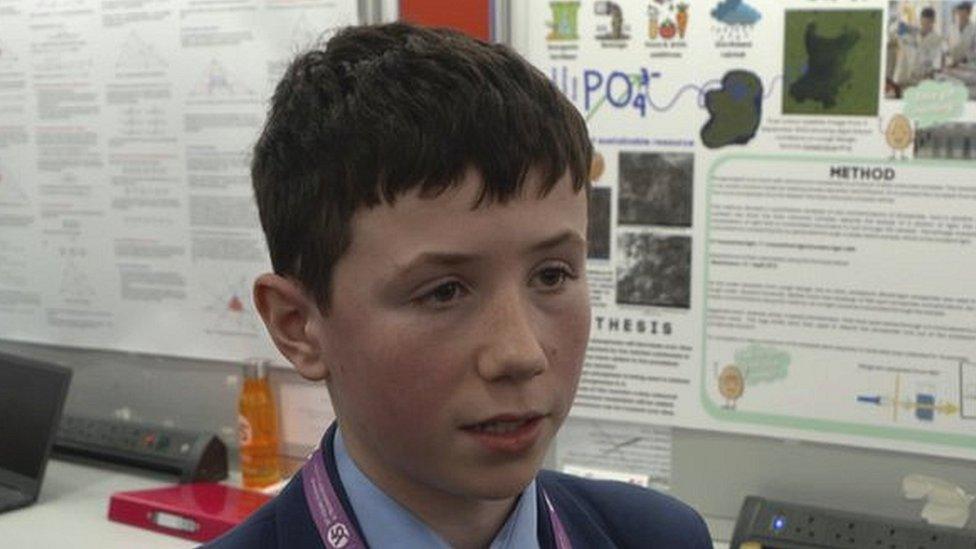
Ronan Scullion said he hoped their research could help people living around Lough Neagh return to life as normal
"We both have family living around the lough, they were seriously affected by that so they had to change their whole lifestyle," said Ronan.
"So we decided we wanted to try to help them so they could relive their normal lifestyle again."
Phosphates from fertiliser is a major driver of blue-green algae - but the aspiring scientists found their egg shells could be an answer.
"We got research from University of Malaysia, which said we could use egg shells, which are 96% calcium carbonate," Laochra added.
"Through research, we found the calcium carbonate absorbs the phosphates in our solution and in the lough.
"We would still need a lot more experiments to make sure."
The boys sourced a local vendor who gave them recycled egg shells and, through a series of tests, could measure how many shells were needed to de-contaminate the water.
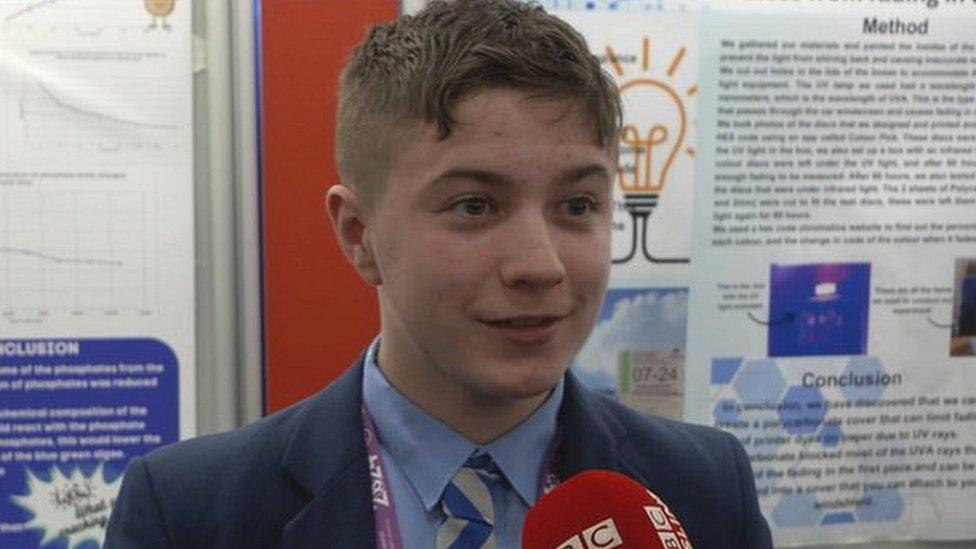
Loachra Hill said they would need to carry out more experiments to test their theory
This week marks 60 years of the Young Scientist Award, with 90 prizes available for innovation in science and technology with more than 2,000 projects in the running.
Students from St Mary's College in Londonderry won the Best School Northern Ireland award and the BT Best Project Northern Ireland.
The school was also awarded the 2nd Senior Group title in the Chemical, Physical & Mathematical Sciences category for their project which investigated a method to reclaim lithium from used batteries.
Allow X content?
This article contains content provided by X. We ask for your permission before anything is loaded, as they may be using cookies and other technologies. You may want to read X’s cookie policy, external and privacy policy, external before accepting. To view this content choose ‘accept and continue’.

Students from St Dominic's High School in Belfast won the BT Health & Wellbeing Award for their project on "toxic positivity and its long-term effect on mental health".
The other schools and colleges from Northern Ireland that took part were:
South Eastern Regional College, Lisburn
South Eastern Regional College, Bangor
St Ciaran's College, Ballygawley
St Patrick's College, Dungannon
St Cecilia's College, Derry
The exhibition continues until Saturday.
Related topics
- Published3 October 2023

- Published21 October 2023
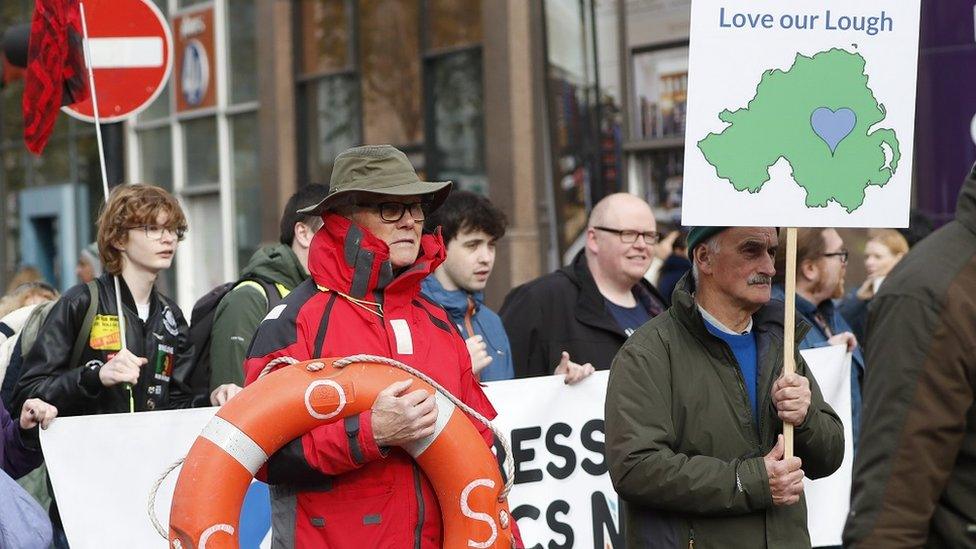
- Published28 June 2023
